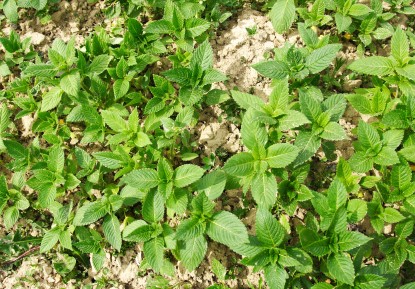
Herbs become invasive in one of two ways. Some freely scatter their seeds, that seem to sprout with ease even in the most inhospitable conditions. Others send out rhizomes (root-like stems) that meander along just under the soil's surface; sprouting new plants as they go. Both are highly efficient ways to overrun your garden and choke out existing plants. Here are some ways to keep these invasive herbal companions in check.
If you find that one of the invasive herbs in your garden has managed to escape, dig up the unwanted seedlings, making sure to remove the entire root system. Then sift through the soil with a digging fork to make sure you get any leftover pieces. Keep an eye on the area for several months, and either dig out any plants that reappear or clip them off at soil level and smother them for several weeks with a heavy layer of newspaper or a large, flat stone.
The following list of invasive herbs is not meant to be complete. In fact, in your region, the list may be much longer:
Catalogue Clues: When shopping for herbs in garden catalogs, invasive herbs should come with a warning (mint in particular), but they usually don't, so you'll need to do your homework as well as learn to read between the lines. Plant descriptions such as 'carefree", "vigorous", "establishes quickly", or 'grows anywhere" may be code for invasive tendencies. When acquiring herbs locally, consult other gardeners, local nurseries, and your local extension agent about herbs that are invasive in your area.

About The Author: Ellen Brown is an environmental writer and photographer and the owner of Sustainable Media, an environmental media company that specializes in helping businesses and organizations promote eco-friendly products and services. Contact her on the web at http://www.sustainable-media.com
Add your voice! Click below to comment. ThriftyFun is powered by your wisdom!
Every year I have to trim my Oregano to keep it from spreading all over my garden. I also have to pull out bunches of Lemon Balm it's everywhere. If I were to let these two go they would wipe out everything else in my Garden.
You should add Lemon Balm and Oregano to that list.
You can add oregano, wild violets and seedless morning glories to that list!
Add your voice! Click below to comment. ThriftyFun is powered by your wisdom!